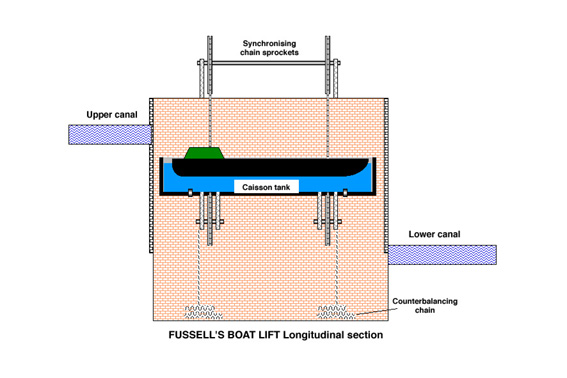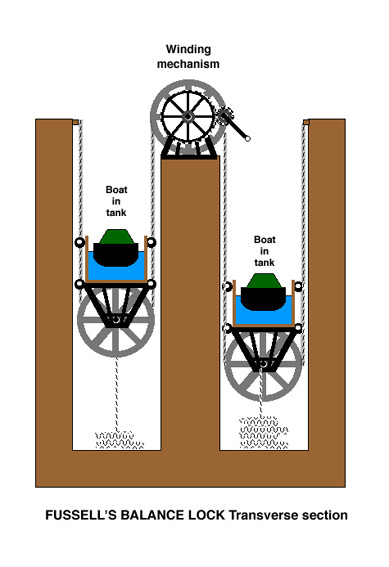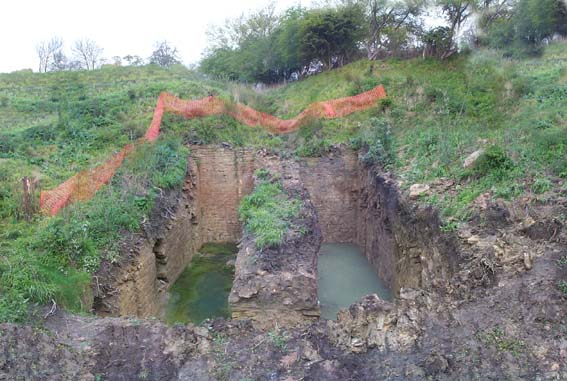THE DORSET & SOMERSET CANAL
FINDING FUSSELL'S TRIAL BALANCE LOCK
Strung out along a secluded valley
at the extreme eastern end of the Mendips in Somerset are a
number of strange structures which appear to have served no
purpose. At Edford there is a canal bridge in a field and in
Coleford there is a spectacular aqueduct, high above part of
the village, apparently connected to nothing whatsoever. Not
far from Frome is the remains of a staircase of what appear
to be deep, strangely misshapen, lock chambers excavated
into a hillside.
A Lock Chamber at Barrow Hill
These are some of the surviving remains of the Nettlebridge branch of "The Canal the Never Was", the Dorset and Somerset Canal. Started in 1796, it was never completed and many of its engineering features have been shrouded in mystery and were believed lost forever. With the formation of the Dorset and Somerset Canal Study Group in 1995, the scattered pieces of information have been gradually brought together and a clearer picture is emerging of how the canal was intended to have been built. This research was not helped by the fact that the Company Records have disappeared without trace.
Of particular interest was the involvement of James Fussell (1748 - 1832), a shareholder in the canal and an ironmaster who had established an edge-tool works at Mells, near Frome, not far from the line of the canal. He had a number of patents to his name and one, No.2284, was worthy of special attention: it was for a "Balance Lock for Raising and Lowering Boats, &c.; applicable to other purposes". No wonder those lock chambers looked a little strange, they were not intended for ordinary locks but for something quite revolutionary.

Fussell's Balance Lock was a 2-tank boat lift which pre-dated Anderton by a very long way and was the very first of that kind in the world. Fussell was a specialist chain designer and he hit upon the idea of using his newly invented sprocketed chain to synchronise the movement of the two ends of the long tanks of water. Without this invention to hold them level, the tanks would have been unstable and the water would have sloshed to one end and capsised them.
The large masonry structure
containing the tanks was divided into two chambers and let
into a hillside where the canal changed level. The staircase
of lock chambers had evidently fallen victim to the canal's
premature demise and was never completed - but there was
tantalising evidence that an earlier "trial" balance lock
had been built elsewhere on the canal to test out the
principle &emdash; and that one had actually worked.

After much head-scratching, the
search homed-in on a section of canal on a private estate
where a change of level seemed to occur inside a
densely-wooded valley. With the landowner's permission the
area was cleared by work parties from the D&S Group and
the Somersetshire Coal Canal Society (who have a particular
interest in boat lifts of all types). The only clue that
anything might possibly lie beneath the surface was a couple
of dressed stones which appeared to have been laid as a
course of masonry. Further work with a pickaxe revealed that
this indeed had been the site of a structure and, with
archæologists on hand, a large excavator was brought
in to see what else might be found.
Searching for the Site
Clearing the Site by Hand in Preparation for Excavation
The result was vastly beyond
anyone's expectations - the excavation opened up a masonry
chamber 30 ft. long, 8 ft. wide, with other evidence
suggesting that the structure had probably been over 30 ft.
high. An archway at 'basement' level appeared to lead to a
second parallel chamber, now filled with rubble, making the
whole thing 24 ft. wide.

At this stage it was decided to analyse the
results and sort through the evidence which had been found, before
contemplating further excavation. The excavation of the second
chamber was undertaken the following year and revealed a similar
structure and an even greater quantity of artefacts.

Both Lock Chambers Revealed
Click
here for larger picture
Artefacts Found During the
Excavations
A piece of leather
A caulking iron
Some nails
A hook
Although the structure appears quite robust and has shown no signs of serious movement yet, it would be a shame if winter frosts were allowed to wreak havoc with the newly-revealed stonework. In the long term, it seems likely that the only practical way to preserve the structure will be to fill it in and give the archæologists of 100 years hence the same thrill we experienced, when it is their turn to discover it again.
More information about Fussells from: Fussells Iron Industries Society
Contact for further information:
Derrick Hunt,
43, Greenland Mills,
Bradford-on-Avon,
Wilts.
BA15 1BL
Paper on Fussells Balance Lock Excavation